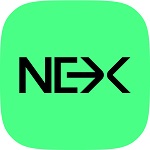 | Layer protocol (LRX)ICO The decentralized reputation protocol for the global sharing economy, built on the blockchain. IMPORTANT: By investing in this business you agree to ourDisclaimer. All information including our rating, is provided merely for informational purposes. CryptoTotem does not provide investment advice. |
Overview
|
What is Layer protocol
Layer Protocol is a decentralised, reputation and incentive system. User's siloed information from various companies such as Uber, AirBnB, Hotels.com can be pulled together for the mutual benefit of users as well as companies who have yet to gather enough behaviour data on the individual. Layer Protocol massively improves the relationship between asset providers and their users in terms of assessing the risk of renting to a given individual, ensuring assets are kept in good condition and offering better prices to users with a history of positive behaviour. In return, users do not just receive better deals but also a variety of rewards, offers and incentives from partner companies on the network. Layer Protocol differs from its competitors by being designed to allow easy integration to current existing, centralised, non-blockchian projects first. Adoption and useability is at the forefront of this tech and product centric team. The team behind Layer Protocol have designed and created Layer Protocol out of a need for such a reputation & incentive system from their own successful bike sharing company in San Francisco. A real world problem which is being solved elegantly through a blockchain power solution.DetailsTotal tokens for sale: 400,000,000 LRXHard cap: 15,000,000 USD LegalBlockchain Platform: EthereumCountry limitations: USA Registration country: Switzerland | Token infoTicker: LRXType: Utility-token Token standard: ERC-725 Token price in USD: 1 LRX = 0.0375 USD Accepted currencies: ETH Token distribution: 40% Token sale 15% Team and advisors 30% Company reserve Funds allocation: 40% User Acquisition 20% BD and Partnerships 10% Operations and Overheads 30% Engineering |
Layer protocol Roadmap
August 15th 2018
Core
ERC-725 Compatibility: Finalize requirements and design of the identity protocol to make it compatible with ERC-725; Tooling: Test environments, tools, integration, smart contract versioning, and establishment of deployment practices.
Layer Nodes
Benchmarks: Performance tests of potential Layer Node architectures to determine the best system design moving forward.
September 1st 2018
Core
Asset Provider Identity Interface: Smart contracts and unit tests for an asset providers to push an identity onto the blockchain
Utilities
Asset Provider Python SDK: Wrappers around smart contract methods, including package manager support.
Layer Nodes
Datastore: Local temporary store when retrieving data from the network.
Core
User Claim of Identity: Interfaces and unit tests for users claiming an identity. This allows users to link multiple identification properties
Utilities
SDK: Interfaces for the identity protocol.
Layer Nodes
Containerization: Package Layer Nodes in a Docker container for easy deployment.
Core
Identity Challenge on Claim: ERC 725 compatibility, and permissioned access to necessary public methods on contracts; Reputation Data: Models / interfaces for reputation data by provider category.
Utilities
SDK: Reputation data model and methods.
Layer Nodes
Discovery: Ability for node discovery starting with a seed node, followed by other peer nodes.
Core
Scoring Interface: Asset provider can score a user based on an identity hash.
Utilities
Identity Signing: Start backend to hold/serve/publish public keys for signing an identity, including private keys for verification.
Layer Nodes
Host Seed Node: Internal seed node to discover other Layer Nodes; Peer Connectivity: Identify all Layer Nodes are active on the network at any given time. This will eventually be used for maintaining quality of service.
Core
Provider Reputation Score (PRS): The ability for asset providers to retrieve PRS for users.
Utilities
Identity Signing: Complete.
Layer Nodes
Caching: Layer Nodes cache structure to optimize future computation of scores.
Core
Provider Reputation Score (PRS): Complete PRS, along with unit tests, and deploy to Testnet.
Utilities
Identity Signing Tool: To aid development, this tool helps developers sign user identities for use throughout the protocol.
Layer Nodes
PRS Computation: Layer Nodes compute PRS from transactions and provider category processing.
Core
Provider Reputation Score (PRS): Optimize PRS read/writes for computation and storage utilization.
Utilities
SDK: Integrate remaining features to Layer SDK for asset providers and Layer Nodes.
Layer Nodes
Layer Reputation Scores (LRS): Begin computation algorithms.
Core
Scoring Release: Release of scoring to the Testnet.
Utilities
Layer SDK: Unit tests, documentation and packages for Testnet release.
Layer Nodes
Layer Reputation Scores (LRS): Unit tests for LRS algorithms.
Core
Identity Signer Update: Identity signers can contribute additional identifiers to user identities, and perform an “identity check”.
Utilities
Publish Second SDK: We will provide a complete SDK in another language.
Layer Nodes
Reputation Score Signing: Nodes have to sign computation results for them to be valid.
Core
Layer Nodes Stake: Smart contracts to manage staking of Layer Nodes.
Utilities
Sample Application: Start demo application that based on developed SDKs.
Layer Nodes
Staking: Running a valid node will require a LRX stake to be put up;
Testing and Optimization: Continual optimization of Layer Nodes around performance, gas costs, and security.
Core
Identity Match API: The API matches two identities without user claim by trusted identity signer. This fixes the issue of unclaimed identities lacking data, or users repeatedly signing up to perform bad behavior.
Utilities
Sample Application: Complete, open source, and deploy a sample application for viewing data on Layer Protocol.
Layer Nodes
Testing and Optimization: Continual optimization of Layer Nodes around performance, gas costs, and security.
Project team





Advisors





















